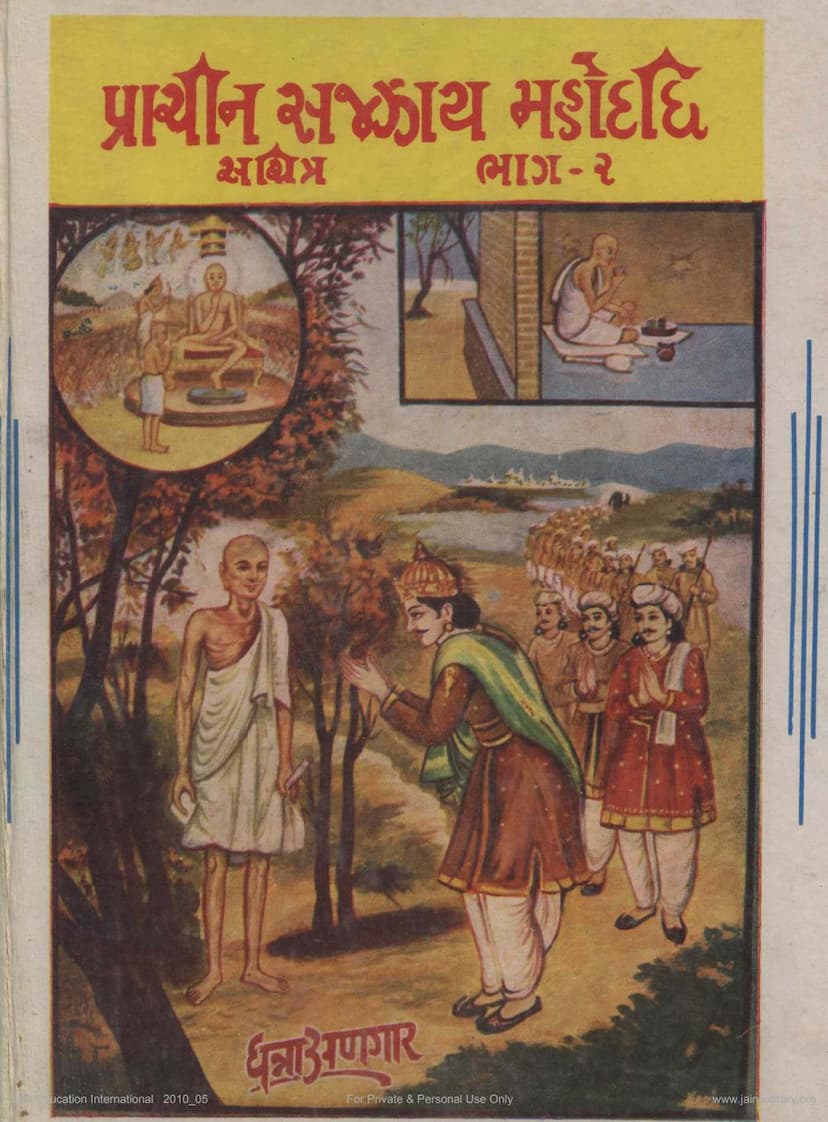Prachin Sazzaya Mahodadhi Sachitra Part 2
Added to library: September 2, 2025

Summary
This Jain text, "Prachin Sazzaya Mahodadhi Sachitra Part 2," is a collection of devotional songs and hymns called "Sajjay" in Gujarati, compiled by Shah Indrachand Dhanraj Dhoka of Adoni, Andhra Pradesh. The book, published by Shah Indrachandji Dhanrajji Dhokaji Adoni AP, is a comprehensive compilation of various Sajjays that are sung during religious occasions and for spiritual contemplation within the Jain tradition.
Key aspects of the text include:
-
Title and Authorship: "Prachin Sazzaya Mahodadhi Sachitra Part 2" translates to "Ancient Ocean of Sajjays, Illustrated, Part 2." The authors are listed as Shah Indrachand Dhanraj Dhoka from Adoni, AP, and the publisher is also Shah Indrachandji Dhanrajji Dhokaji, Adoni, AP.
-
Content: The text is primarily a collection of Sajjays, which are devotional poems or songs. The index lists a vast number of Sajjays dedicated to various Tirthankaras (Jain spiritual guides), important Jain figures, concepts, and religious events. These include Sajjays related to:
- Tirthankaras: Such as Parshvanath, Munisuvrat Swami, Mahavir Swami, and others.
- Prominent Jain Figures: Like Sthulibhadra, Gajsukulmal, Chandanbala, Vishnukumar, Dhanna, Shrenik, Amarkumar, Bhadrabahu, etc.
- Religious Concepts: Such as Panch Mahavrat (five great vows), Das Vaishalik (Ten Vaishalik Sutra), Bhavana (meditative contemplations), Karma, Moksha, Samyak Darshan (Right Faith), etc.
- Religious Practices and Festivals: Including Upavas (fasting), Chaitya Vandan (temple worship), and the important festival of Parushana.
- Philosophical Teachings: Concepts like Anekantavada (multiplicity of viewpoints), non-violence (Ahimsa), and the nature of the soul are woven into the Sajjays.
-
Structure and Presentation: The book is organized with an index listing the Sajjays by name, starting with "Satyavami" and moving through numerous others, often with their corresponding page numbers. The Sajjays themselves are presented in poetic verses, often divided into "Dhal" (stanzas or chapters), indicating a lyrical and often sung tradition. The illustrations mentioned in the title suggest that the book might have contained visual elements to complement the text.
-
Spiritual and Ethical Focus: The Sajjays aim to inspire devotion, reinforce Jain ethical principles, and provide spiritual guidance. They often narrate stories of past lives, spiritual practices, and the consequences of actions (karma), encouraging the reader towards a virtuous life and ultimate liberation (moksha).
-
Language: The text is primarily in Gujarati, reflecting the linguistic heritage of the Jain community in that region. The devotional content is profound and emphasizes the core tenets of Jainism.
-
Devotional Purpose: The purpose of these Sajjays is to aid devotees in their spiritual journey, to foster a deeper connection with the Tirthankaras and Jain teachings, and to provide a framework for daily worship and contemplation, particularly during significant religious periods like Paryushana.
In essence, "Prachin Sazzaya Mahodadhi Sachitra Part 2" is a valuable resource for understanding Jain devotional literature, its rich tradition of Sajjays, and the spiritual wisdom it imparts. It serves as a guide for Jains to connect with their faith through song and story.